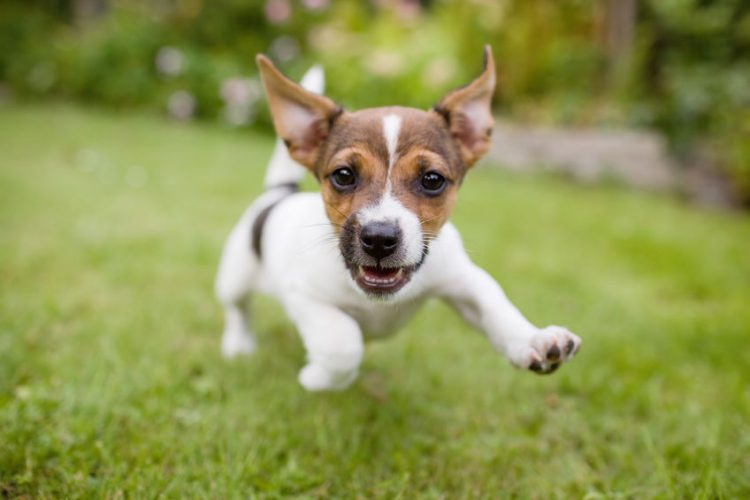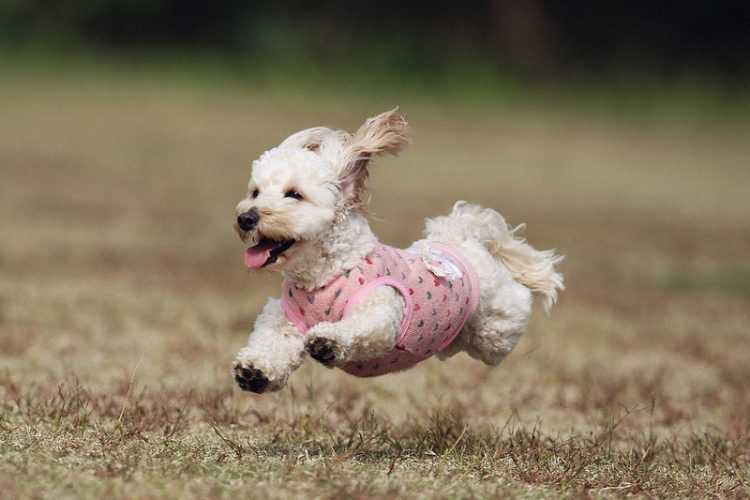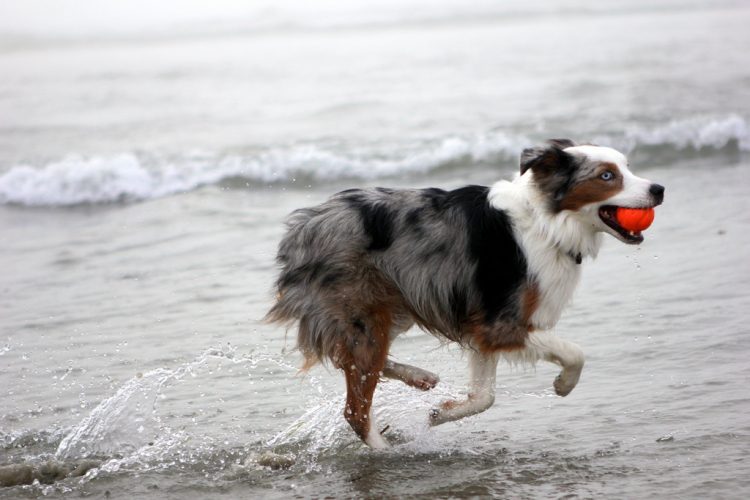
This article on dog off leash etiquette was written by a veterinarian, Dr. Debora Lichtenberg, VMD. Former animal shelter worker Allison Gray contributed to this article. It was last updated on July 8, 2024

- New York City’s Dog Off Leash Policy
- Why Dogs Thrive With Exercise
- 3 Benefits of Off-Leash Running for Dogs
- Why “Off Leash” Is Getting Bad Press Lately
- The Rules Where I Live — And Why They Matter
- Top Rules of Dog Off Leash Etiquette
- Using a Long Line for Off-Leash Training
- Recognizing Off-Leash Safety Issues
- Ensuring Reliable Recall in Dogs
- No Guarantees
- Training, Training, Training
- All Dogs Are Not the Same
- “But My Dog Is Friendly” Isn’t an Excuse
- Location, Location, Location
- Final Thoughts on Dog Off Leash Etiquette
- Reference
New York City’s Dog Off Leash Policy
New York City settled a hot topic years ago when Parks & Recreation decreed that dogs can be off leash from 9 p.m. to 9 a.m. in many large parks, legalizing an already common practice. NYC Parks
Dog haters and dog lovers seem to be co-existing under this plan.
- People have all day where they don’t run the risk of being slobbered or trampled on.
- In the evening or early-morning hours, dogs have an opportunity to run free — supervised, of course.
Why Dogs Thrive With Exercise
Dogs thrive when they are allowed to socialize, run free, and exercise. This reduces aggression and improves overall behavior. Dog Aggression
Reports indicate that dog bite incidents in New York have decreased with more exercise opportunities. Dog Bites
A study found that dogs, like humans, can achieve a “runner’s high” from aerobic exercise. NPR Report
- Exercise helps dogs produce cannabinoids, which make them feel happier and more relaxed.
Conclusion: Dogs feel better and behave better with regular exercise. However, dogs with high energy levels should be properly trained before engaging in off-leash activities to ensure safety. Train first, run later.
3 Benefits of Off-Leash Running for Dogs
After intense training and ensuring a safe environment, allowing your dog off leash can provide significant benefits. Here are three key advantages:
- Exercise
- Running is beneficial for both the body and soul. Many behavioral problems, such as destructive behaviors, inappropriate jumping, vocalizing, separation anxiety, and house soiling, can be alleviated with regular exercise. Separation Anxiety
- Explore
- Off-leash running enriches your dog’s life by allowing them to explore their surroundings. They can stop to sniff, poke, and paw, which stimulates their senses and improves mental agility.
- Expression
- Dogs express themselves freely when off leash. Some may run into a pond, others may watch the ripples, and some might jump in joy. This freedom of expression, combined with physical and mental exercise, greatly enhances their overall well-being.
By assessing your dog’s temperament, training extensively, and taking safety precautions, off-leash running can be a wonderful gift for both you and your dog.

Why “Off Leash” Is Getting Bad Press Lately
Finding open spaces for off-leash running is increasingly difficult as some municipalities become less dog-friendly. Wildlife protection, especially during nesting times in early spring, is a valid reason to leash dogs. However, with proper control and behavior management, wildlife and off-leash dogs can coexist.
The primary concerns include:
- Aggressive Dogs: Many dog owners are unaware of how to prevent aggressive behavior in their dogs. Preventing Aggressive Behavior
- Dogs Without Manners: Dogs jumping on people and behaving aggressively can give all off-leash dogs a bad reputation. Stopping Dogs from Jumping
In Boulder, Colorado, dog owners must register their dogs and take a special class in off-leash etiquette before their pets are allowed to run free. This ensures that dogs are well-behaved and that owners understand the importance of off-leash etiquette.
The Rules Where I Live — And Why They Matter
In Amherst, Massachusetts, where I live, Amethyst Brook is a beautiful conservation area where, for many years, dog walkers and human walkers co-existed. However, now dogs can be off leash only from dawn until 10 a.m.
As a veterinarian and a dog lover, I support the leash law at Amethyst Brook because safety for everyone is paramount. The area became too crowded, and people didn’t take responsibility for their pets’ behavior.
Recently, two significant emergencies highlighted the importance of this rule:
- An older cockapoo, on leash, was attacked by an off-leash dog. The victim required two surgeries, surgical drains, pain medication, and anti-anxiety treatment. This harrowing experience was distressing for both dogs and humans.
- A young, free-spirited dog named Dexter was hit by a car because his owner failed to leash him upon leaving the conservation area. Dexter survived but suffered painful injuries to his foot, pad, and hip. If a dog is not trained to respond to voice commands and is out of sight, they should not be allowed to run free, as they can injure themselves or others.

Top Rules of Dog Off Leash Etiquette
Off-leash running is a true joy for both you and your dog, but it can also be dangerous. Your dog’s personality, your environment, and your training protocol dictate whether off-leash running is a possibility.
Here are some guidelines to consider if you are thinking about running free with your dog:
- Teach Your Dog to Listen
- Ensure your dog understands simple commands like “down” or “off.” Untrained dogs should not be able to greet people on trails.
- Manage Aggressive Dogs
- If you have a dog-aggressive dog, ensure the area is very unpopulated or be able to leash the dog when encountering another canine. Preventing Aggressive Behavior
- Avoid Drying Off on People
- If your dog is soaking wet, do not let them dry off on people. Others may need to remain in dry clothes for work or other activities.
- Prevent Humping
- Do not let your dog hump people who are sitting down.
- Stay Away from Picnic Areas
- Keep your dog away from picnic areas and do not let them urinate on personal items.
- Pick Up the Poop
- Always pick up after your dog, even if nobody is watching. It is essential for hygiene and courtesy.
- Avoid Disruptive Play
- Do not play stick or encourage barking where people are resting. Find an active part of the park for such activities.
Using a Long Line for Off-Leash Training
Using a long-line leash is an effective way to transition your dog to off-leash activities. This method allows your dog to experience the freedom of being off leash while still giving you control. A long line, typically made of nylon or biothane and ranging from 10 to 50 feet, provides your dog with room to explore without the risk of running off.
- Training Benefits: The long line helps reinforce recall commands and ensures your dog stays close. It’s especially useful in open areas where your dog can practice responding to commands from a distance.
- Safety: Attach the long line to a well-fitted back-clip harness to prevent your dog from straining their neck. This setup allows for safer training sessions.
- Practical Use: Use the long line in open spaces where your dog has plenty of room to roam. Ensure the area is free from hazards and that local ordinances permit the use of long leashes. Source: AKC
Recognizing Off-Leash Safety Issues
When considering off-leash activities, it’s crucial to be aware of potential safety issues. Dogs off leash can encounter various hazards that may not be immediately apparent to their owners.
Was YOUR Pet Food Recalled?
Check Now: Blue Buffalo • Science Diet • Purina • Wellness • 4health • Canine Carry Outs • Friskies • Taste of the Wild • See 200+ more brands…

- Toxic Plants and Substances: Your dog might come across toxic plants, garbage, or animal waste. Training commands like “leave it” and “drop it” are essential to prevent them from ingesting harmful substances.
- Wildlife Interactions: Dogs off leash can disturb wildlife, leading to potential dangers for both your pet and the animals. Ensuring your dog understands commands like “stay” and “come” can mitigate these risks.
- Environmental Hazards: Off-leash dogs might explore areas with hidden dangers such as sharp objects, unstable ground, or bodies of water. Constant supervision and training in safety cues are vital for their protection. Source: AKC

Ensuring Reliable Recall in Dogs
A reliable recall is essential for any dog off leash. It ensures your dog will return to you immediately, regardless of distractions.
- Training Techniques: Start recall training in a low-distraction environment and gradually increase the level of distraction. Use high-value treats and praise to reinforce the behavior.
- Practice Consistently: Consistent practice in various environments helps solidify the recall command. Begin with the leash on, then progress to a long line, and finally try off-leash in a secure area.
- Positive Reinforcement: Always reward your dog for coming when called. Never punish them for returning, even if it takes a while. The goal is to make coming to you a positive experience every time.
- Games and Activities: Incorporate games like hide-and-seek or hot potato to make recall training fun and engaging. These activities can strengthen the bond and improve your dog’s responsiveness. Source: Preventive Vet
No Guarantees
Dog off leash running always poses a risk. You cannot control outside stimuli, such as other dogs, people, bicycles, loud noises, or scampering woodland creatures. Any of these could trigger even a well-trained dog to ignore voice commands. Ignoring Voice Commands
Training, Training, Training
Extensive training, specifically dog off leash training, is essential. Consider hiring a trainer who specializes in off-leash techniques or consult good articles on the topic. Training Articles
- Begin simple puppy training immediately if you have a puppy. The goal is to produce a well-trained dog who responds to voice commands even under complicated circumstances.
- Never let a puppy run free without proper training.
All Dogs Are Not the Same
Some dogs will never be able to reliably run free, regardless of the training. These include:
- Frightened or shy dogs Socializing Shy Dogs
- Breeds with a strong prey drive
- Hunting dogs without solid training
- Dogs with stubborn temperaments or aggression issues

“But My Dog Is Friendly” Isn’t an Excuse
Your dog may be the wiggliest, cuddliest, sweetest pup ever, but their temperament isn’t an excuse to have them off leash in a public area. A lot can go wrong:
- Scaring People: Many people are terrified of dogs, even your cute pup who wouldn’t hurt a fly.
- Approaching Aggressive Dogs: Many dogs are aggressive toward other dogs or are leash reactive. If your dog isn’t on a leash, you’ve lost your most powerful tool to stop a dog fight before it starts.
- Running into Traffic: Even the most well-trained dog may struggle to ignore a squirrel, bunny, or cat that darts out in front of them.
You can safely have your dog off leash in designated places. If you’re not sure what the leash rule is, err on the side of safety and keep the leash attached.
Location, Location, Location
Rural Settings
These areas afford the best options for leash-free running. Trails, fields far away from traffic, protected conservation areas, and dog-friendly beaches and lakes are paradise for dog adventures.
- Voice command is still essential, no matter how remote or unpopulated the area. Training is key, and it’s important to know that no off-leash running is ever 100% safe.
Suburban Areas
Suburban areas often provide large outdoor spaces, trails, and dog-friendly parks. However, if your suburb is densely populated, be wary of your proximity to traffic, people, dogs, and children.
- The quick, jerky movements and no-boundary behaviors of children can startle even a well-behaved dog. Avoid off-leash running around unfamiliar children.
Urban Areas
Cities have few off-leash opportunities as a rule. Large city parks may have areas designated as dog-friendly, and there are always dog parks. However, dog parks have their own set of safety issues, and some dogs may love other dogs on a walk but never seem comfortable in a dog park.
Once the leash comes off, this dog knows exactly where to go:
Final Thoughts on Dog Off Leash Etiquette
Running your dog off leash can be a wonderful experience if done responsibly. Always consider your dog’s temperament, the environment, and proper training before allowing your dog off leash. Adhering to these guidelines ensures a positive experience for both your dog and the community.
Frequently Asked Questions (FAQ)
How to off-leash train your dog?
Begin by ensuring your dog has mastered basic commands and practice recall training in a safe, enclosed area, gradually increasing distractions and distance.
How to train a dog not to run away when off-leash?
Use a long-line leash to practice recall commands consistently, rewarding your dog for returning promptly.
How to stop a dog from running away when off-leash?
Train your dog with positive reinforcement, using high-value treats and praise to encourage reliable recall in various environments.
Reference
- “Parks Barks Official Off-leash Hours Policy.” NYC Parks. May 10, 2007. https://www.nycgovparks.org/news/press-releases?id=19895.
- Menor-Campos, D.J. et al. (2011) “Effects of exercise and human contact on animal welfare in a dog shelter.” Veterinary Record 169, 388.
- Joyce, Christopher. “‘Wired To Run’: Runner’s High May Have Been Evolutionary Advantage.” NPR. May 7, 2012. https://www.npr.org/sections/health-shots/2012/05/07/151936266/wired-to-run-runners-high-may-have-been-evolutionary-advantage.
- “Is My Dog Ready to Be Off-Leash?” American Kennel Club. https://www.akc.org/expert-advice/training/is-my-dog-ready-to-be-off-leash/
- “Why Dogs Belong on a Leash Outdoors.” Outside Online. https://www.outsideonline.com/culture/opinion/why-dogs-belong-leash-outdoors/
- “Dog Off-Leash Training.” Preventive Vet. https://www.preventivevet.com/dogs/dog-off-leash-training



